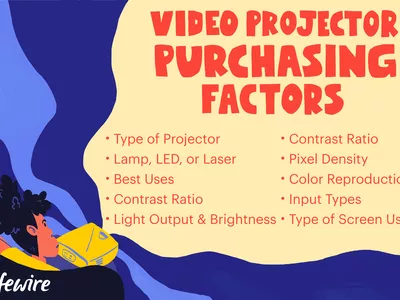
Transitioning From Integrated to Discrete Graphics Cards - A Step-by-Step Guide (YL Software)

Mastering Display Customization on Windows [Student]: What Is the Value of (B ) if It Satisfies the Equation (\Frac{b}{6} = 9 )?
The Windows 10 display settings allow you to change the appearance of your desktop and customize it to your liking. There are many different display settings you can adjust, from adjusting the brightness of your screen to choosing the size of text and icons on your monitor. Here is a step-by-step guide on how to adjust your Windows 10 display settings.
1. Find the Start button located at the bottom left corner of your screen. Click on the Start button and then select Settings.
2. In the Settings window, click on System.
3. On the left side of the window, click on Display. This will open up the display settings options.
4. You can adjust the brightness of your screen by using the slider located at the top of the page. You can also change the scaling of your screen by selecting one of the preset sizes or manually adjusting the slider.
5. To adjust the size of text and icons on your monitor, scroll down to the Scale and layout section. Here you can choose between the recommended size and manually entering a custom size. Once you have chosen the size you would like, click the Apply button to save your changes.
6. You can also adjust the orientation of your display by clicking the dropdown menu located under Orientation. You have the options to choose between landscape, portrait, and rotated.
7. Next, scroll down to the Multiple displays section. Here you can choose to extend your display or duplicate it onto another monitor.
8. Finally, scroll down to the Advanced display settings section. Here you can find more advanced display settings such as resolution and color depth.
By making these adjustments to your Windows 10 display settings, you can customize your desktop to fit your personal preference. Additionally, these settings can help improve the clarity of your monitor for a better viewing experience.
Post navigation
What type of maintenance tasks should I be performing on my PC to keep it running efficiently?
What is the best way to clean my computer’s registry?
Also read:
- [New] 2023 | Best Facebook Video Downloader And Addons for Firefox for 2024
- [New] Essential List 7 Cost-Free Video Tags Extractors on YouTube for 2024
- [New] In 2024, The Ultimate Cinemagraph Guide - Top 5 Must-Know Tactics
- [Updated] Optimal VR Experience A Review of Top Oculus Models
- 4 Easy Ways for Your Honor Magic V2 Hard Reset | Dr.fone
- 5 Effective Techniques for Retrieving Erased Browsing Data From Google Chrome
- 簡單指南:在Windows 10/8/7系统下轻松转移SSD到容器
- AOMEI Backupper 工具指南:完整备份和系统还原教程
- AOMEI Backupperのインストールと利用手順 - Windowsコマンドラインで
- DSLR's Place Among Mirrorless Cameras for Videos for 2024
- Le Due Tecniche Ottimali per Eliminare Gli Spazi Neri Su Windows 11
- Recuperación Efectiva De Datos Desaparecidos en Un Portátil Dell
- Schritt-Für-Schritt Anleitung Zum Erfolgreichen Klonen Einer Ubuntu-Festplatte
- The Most Reliable GoPro Cases - #1-10 Showdown
- The Vlogger's Guide To Choosing CamGear - The Top 9 Innovations for 2024
- Top 7 Solutions: How to Resolve Overwatch 2'S Failure to Start
- Ultimate Guide: Top Three Methods for Factory Resetting a Damaged iPhone Display
- Title: Transitioning From Integrated to Discrete Graphics Cards - A Step-by-Step Guide (YL Software)
- Author: Scott
- Created at : 2025-03-01 16:28:08
- Updated at : 2025-03-07 17:41:49
- Link: https://win-web.techidaily.com/transitioning-from-integrated-to-discrete-graphics-cards-a-step-by-step-guide-yl-software/
- License: This work is licensed under CC BY-NC-SA 4.0.